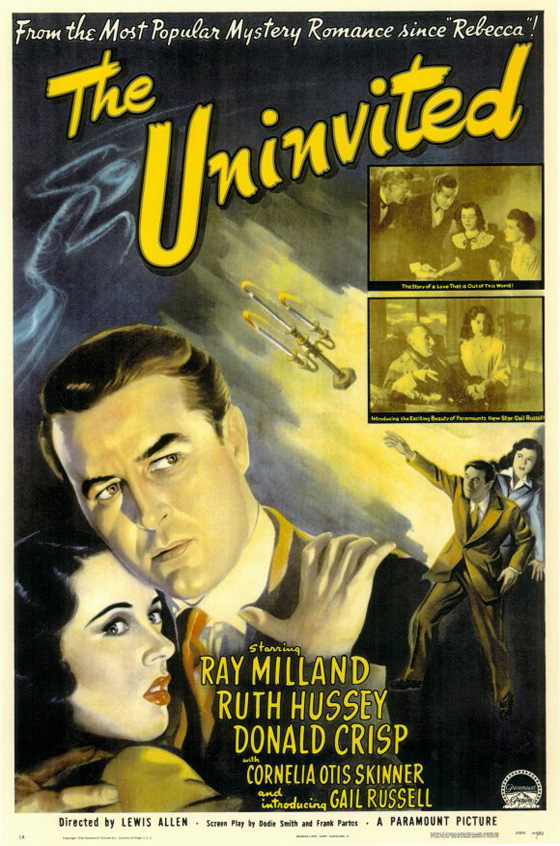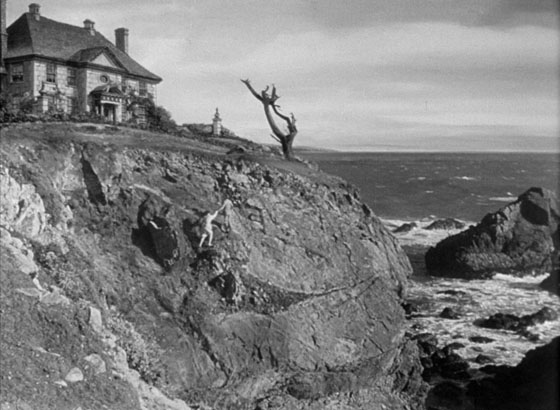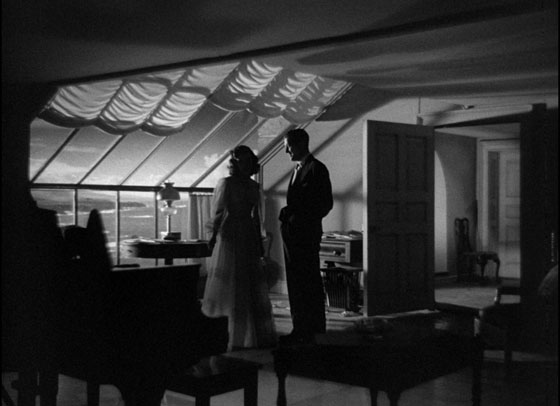
Though it may not be strictly accurate, in many ways it feels that the haunted house genre was born with The Uninvited (1944). An indelible supernatural cocktail mixing equal parts the Old Dark House genre with Hitchcock & Selznick’s adaptation of Rebecca (1940), The Uninvited also seems to owe a certain amount to film noir, in particular the dark melancholy that hung like a gloomy phantasm over the decade’s crime pictures. Though it should be pointed out that the picture, the debut film of stage director Lewis Allen, lacks film noir’s cynicism. It is frequently a light film: impossibly light, given the revelations in the film’s back half. It’s illuminated by witty banter in the vein of a 1930’s comedy, along with a romance set against rear projection coastal cliffs – until the backstory, and the phantoms that deliver it, stain the lighthearted romance, and corrupt the film’s optimistic tone, and the story becomes deeply sad, and profoundly disturbed, before settling on a bittersweet hopefulness. The film is both old-fashioned and modern. It’s breezy and haunted. It is a complete contradiction. And it’s a sophisticated work that can only be compared to its Val Lewton contemporaries, which is high praise.
Siblings Roderick and Pamela Fitzgerald (Ray Milland and Ruth Hussey) stumble across Windward House, an eerie but beautiful manor perched at the edge of the sea – and a steep and narratively-significant cliff. Lured into its interior by their terrier, who’s intent on catching an escaping squirrel, they explore the empty rooms and determine that it must be for sale. On a whim they make an offer to the owner, one Commander Beech (Donald Crisp), and he accepts their frugal offer because the property has become undesirable: residents come to believe it’s haunted. Sure enough, the siblings soon begin hearing a woman sobbing in the night, the sound coming from everywhere and nowhere. They learn that a tragic death occurred near the house many years before: Mary Meredith fell from the cliff near a dead tree, in an incident perhaps connected to her artist husband’s fling with his Spanish model, Carmen. Meanwhile, Roderick, a music critic trying his hand at composition, becomes smitten with the surviving Meredith daughter, the 20-year-old Stella (Gail Russell). But Stella, learning that the house is haunted by her mother, becomes obsessed with reconnecting with the woman, even though the ghost’s intentions might be sinister: at one point Stella is persuaded by the spirit to charge blindly toward the deadly cliff.
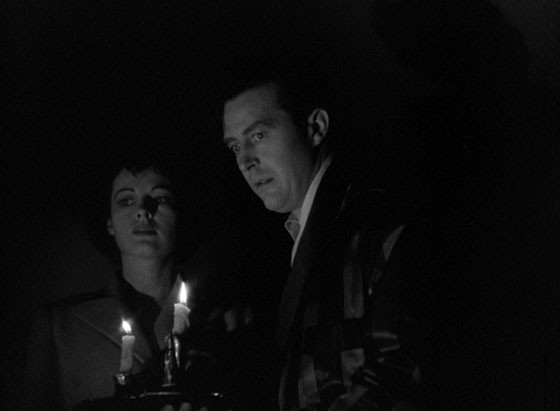
Siblings Pamela and Roderick Fitzgerald (Ruth Hussey and Ray Milland) investigate the supernatural disturbances in their new home.
Almost imperceptibly the film begins to darken its tone, beginning with the unearthly sobbing heard by the ghost at night, and continuing with Stella’s obsessive mania over her dead mother, as well as the arrival of Miss Holloway (Cornelia Otis Skinner), a nurse who once lived with the Meredith family and knows all the house’s darkest secrets. The affinity between Miss Holloway and Rebecca‘s Mrs. Danvers is immediately apparent, as are the overt lesbian overtones when Holloway describes, with awe, her close-knit relationship with the late Mrs. Meredith. (For a film of the mid-40’s, the suggestion of lesbian love is surprisingly obvious.) The film was based on the novel Uneasy Freehold by Dorothy Macardle, and whether or not Macardle was influenced by DuMaurier, the influence upon the film is clear (even the movie poster explicitly draws the comparison). Despite the similarities, and the increasingly cartoonish evil of Miss Holloway – in the final scenes, it’s evident she’s quite mad – the film finds true inspiration in the way Stella comes to grips with the truth of the past, which is not what she expected. The audience may see the final revelation coming a mile away, but Stella’s acceptance of her troubled roots, removing her mother from the pedestal of her imagination, remains genuinely touching. This lands a greater impact in the denouement than whatever the future holds for her romantic relationship with Roderick: Milland is decades older and something of a cad.
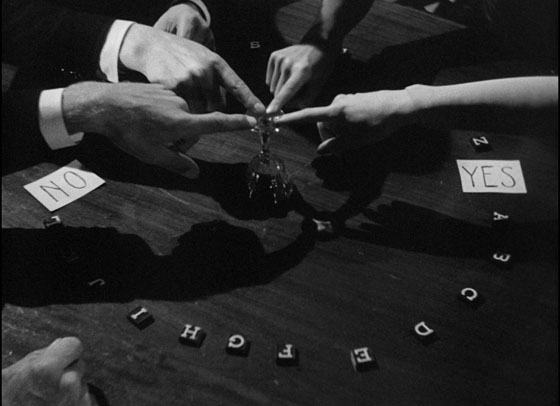
A makeshift spirit board is used to communicate with the ghost(s) of Windward House.
A pleasing standout in the cast is Alan Napier as Dr. Scott, a friend of the Fitzgeralds who ends up adopting their terrier (who detects the presence of ghosts immediately, and keeps a good distance), and offers sage advice throughout. Not even the facts of the supernatural can shake him: he leads Stella and the Fitzgeralds in a communication with the dead in the form of a spirit board, their fingers guiding a glass across the table to spell out words in the manner of the Ouija board. When the glass suddenly flies off the table, shattering, and a ghost suddenly enters the room in a swirling mist (a very good special effect indeed), The Uninvited still manages to evoke genuine chills these seventy years later. It’s easy to envision this film inspiring Shirley Jackson’s novel The Haunting of Hill House (1959) and its less psychological but relentlessly effective film adaptation The Haunting (1963), as well as the many haunted house films that followed. But the power of The Uninvited is rooted in its melancholy, such a key trait for a quality ghost story. Milland’s Roderick Fitzgerald notes a “heaviness” when he enters the room where the late Mr. Meredith painted the model that he was also sleeping with. It’s that stifling sadness that lingers with the viewer when the film is over; you can’t shake it. This is a witty, gorgeous, magical film, but it’s also a brilliant ghost story told well.
